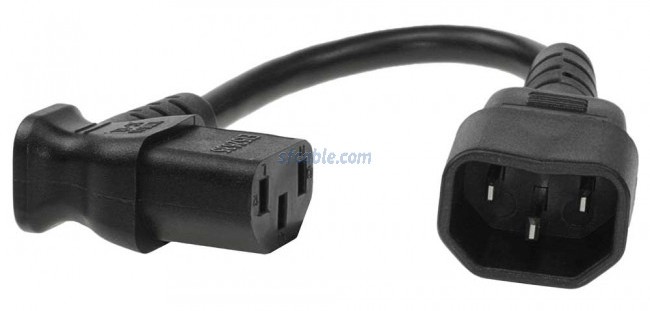Know the C13 Power Cord Coupler that Powers Your Computer System
The source and supply of electrical energy drive the world of electrical appliances. And every human activity is dependent on these appliances. Be it checking emails on the computer or managing a military network. There are countless use cases as such. And where do we connect these appliances? To the power supply units.
The above-mentioned activities run through a computer network. Just like the laptops need power cable adapters, the desktops need power cords. Also, they operate in a similar way as plug adapters do. Which is, connecting the appliance to electrical supply lines.
 Look at Power Cords closely and you’ll observe two end points. One, connected to the wall socket; known as plug. And the other one; which connects the electrical appliance to power cord. Often known as the coupler.
Look at Power Cords closely and you’ll observe two end points. One, connected to the wall socket; known as plug. And the other one; which connects the electrical appliance to power cord. Often known as the coupler.
IEC is a non-profit and non-govt organization. They have set specific standards for couplers which connect the power cord to the electrical appliances. The connecting couplers are available in different combinations for earthing, for temperatures and current. As per the regulation voltage needs to be “Not more than 250 volts (AC). And, the current needs to be “Not more than 16A”.
Using these connecting couplers, merchants can produce appliances for multiple markets. Now, power supply standards differ from one country to the other. So, the merchants just need to change just the power cord. This saves additional cost and time. And they can supply these power cords across the world.
The c13 Power Cord Coupler
C13 Power Cord Coupler Inlet has multiple utilities. Several printers, monitors and other portable devices make use of it. Have you seen a power cord with a country specific standard power plug attached on one end and a c13 power cord coupler to the other? This is known as an IEC Cord.
Standards and Specifications
IEC standardizes the C13 coupler with 60320 standards. And how does it do that? By checking its electrical, mechanical, thermal requirements. Not just that, it also considers the safety specifications of the power cable cord.
Before selecting the coupler, you just need to check the dimensions and size of the appliance. By doing so, you will be able to establish a safe connection between appliance and power cord.
So how to define these safety standards? This is where the IEC standards help. The ratings of a C13 power cord coupler are 15A/250V and 10A/250V. And the temperature rating goes up to 65° Celsius. This maximum temperature rating is the pin temperature. The c13 power cord contains Earth Contact and it also allows rewireable connector.
Misinterpretations
People often tend to misinterpret the C13 Power Cord as the “Kettle Cord”. This happens because; they fail to understand the difference in temperature ratings. A Kettle Cord needs a coupler with a temperature higher than C13 Power Cord. Which means, a c15/16 Kettle Cord usually has a temperature rating of 120° Celsius.
The IEC standards are acceptable across the world. However, some North American Rating agencies rate the products higher than IEC. This includes Canadian Standards Association (CSA), the UL Safety Organization of the US.
For e.g., IEC specifies C13 Power Cord with the rating of 10A current. But due to the tolerance threshold of 5% of 120 V in US & Canada, UL specifies it up to 15A.



Comments
Post a Comment